Toad Story April 2017 - a follow-up to Toad Vigil of 2016
Martha O'Kennon
For years I had been blaming raccoons for violent attacks twice a summer, when the American toads (Bufo ameicanus) gather in my backyard pond to mate. Often I will find the whole complement of toads dead in or around the outside of the pond. A massacre, a couple of weeks before the 2016 study, of at least ten toads overnight led me to want to make sure that the problem really is or isn't the local raccoon population. I posed a question on Researchgate.net as to whether people had information about toads turning violent around the mating process. Several members of Researchgate.net provided information on both sides (Toads vs Raccoons)which you can read in Toad vigil of 2016.
I decided to stay up as long as possible to see what was really happening, and was about to fall asleep about midnight when a very large raccoon appeared by my side and was scrabbling in the pond at the most shallow end, exactly where one toad had been trilling until this moment. I was shocked to see how quickly it had approached, and said loudly "Big Raccoon!", upon which it disappeared. It apparently did not pester the toads again that night. But about sunrise It seemed to have staged a re-assault and a couple of toads were killed. A pair that were mating seem to have been traumatized since their egg strands were somewhat shortened. Fewer toads than usual skipped out of the pond as toadlets. Here are some pictures from2016.
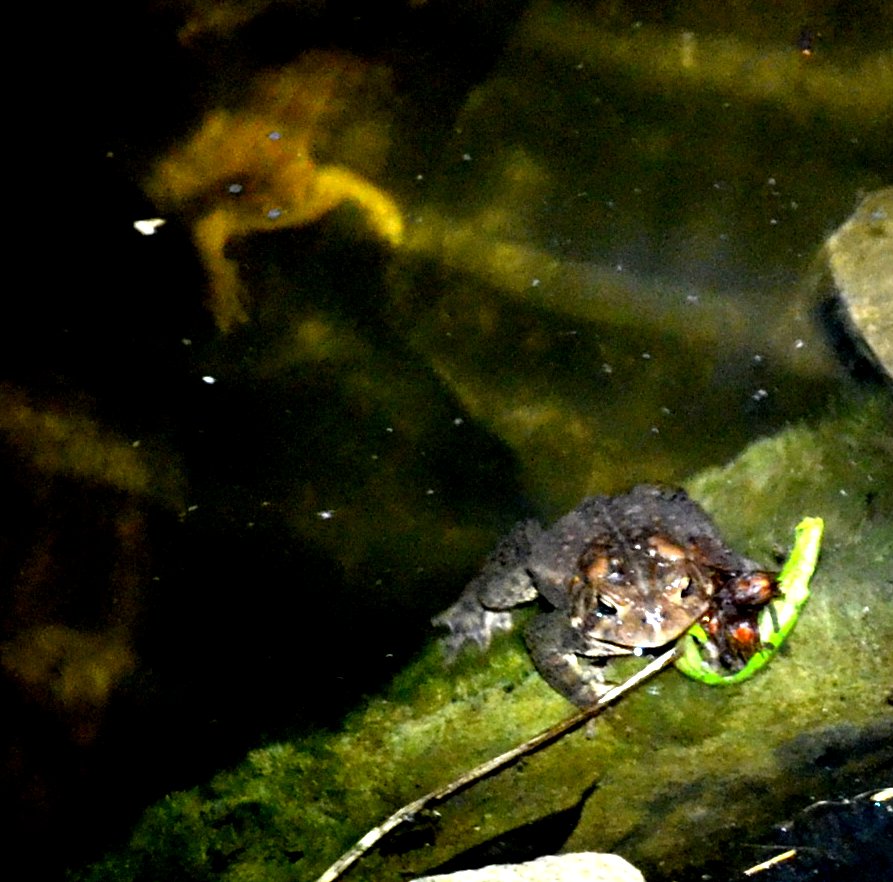
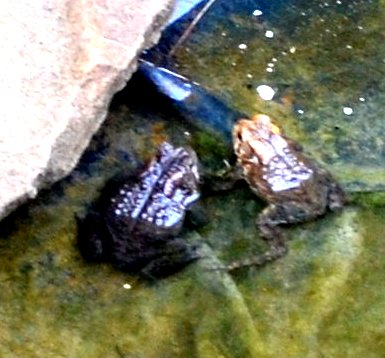
Now up to 2017. Several people have heard tree frogs or American toads in the past few days. Since the calls that my friend had heard as "tree frogs", I now believe that they were in fact "American toads". "My" toads arrived yesterday with one male calling in the afternoon. It sounded like the so-called "tree frog" sounds from down the block. I covered the pond before retiring (a toad had already moved in) with two long runs of chicken wire. I worried that other toads would not be able to get in and/or out of the pond. In the morning when I pulled the chicken wire aside, there were four toads at least.
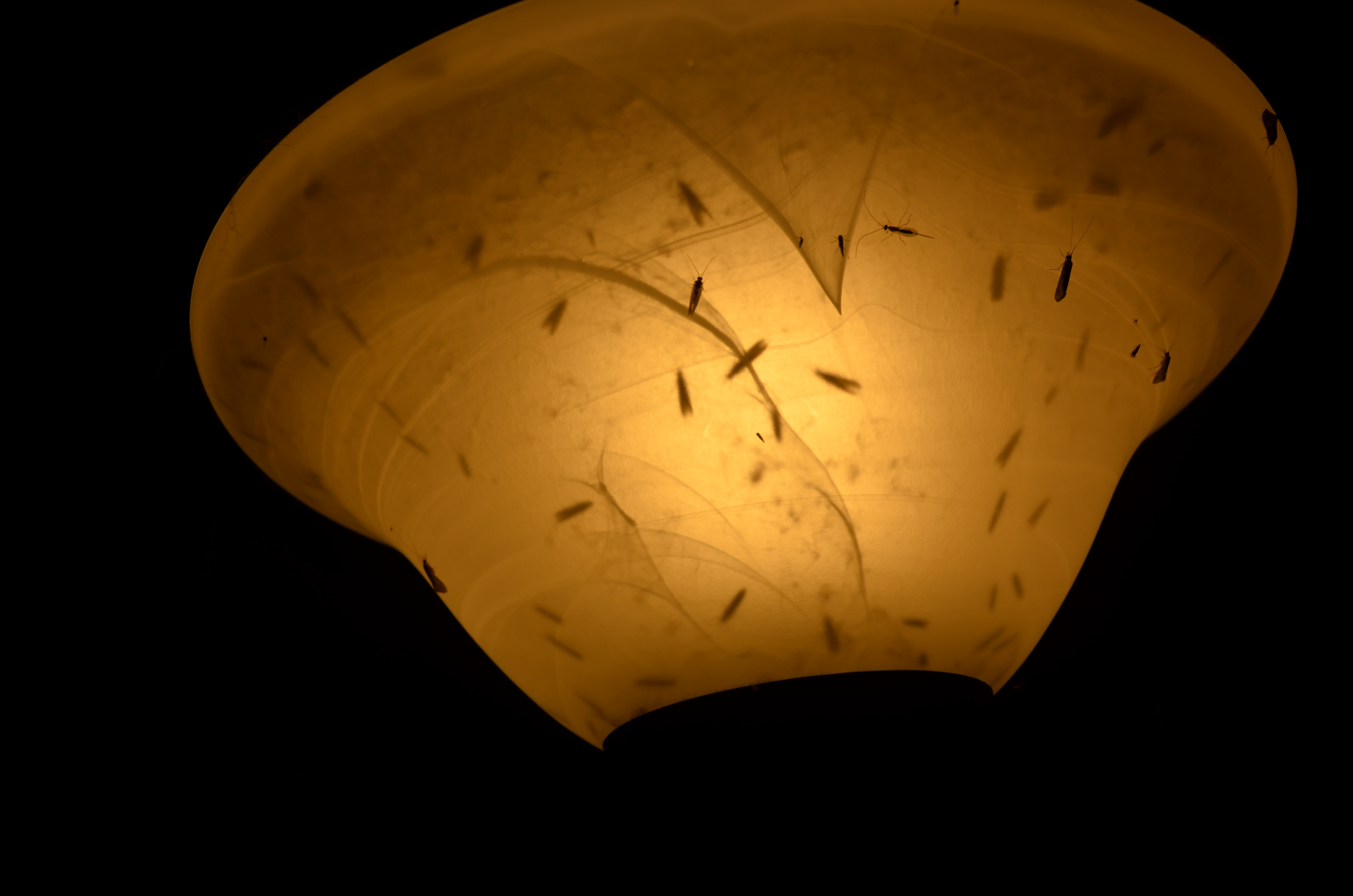
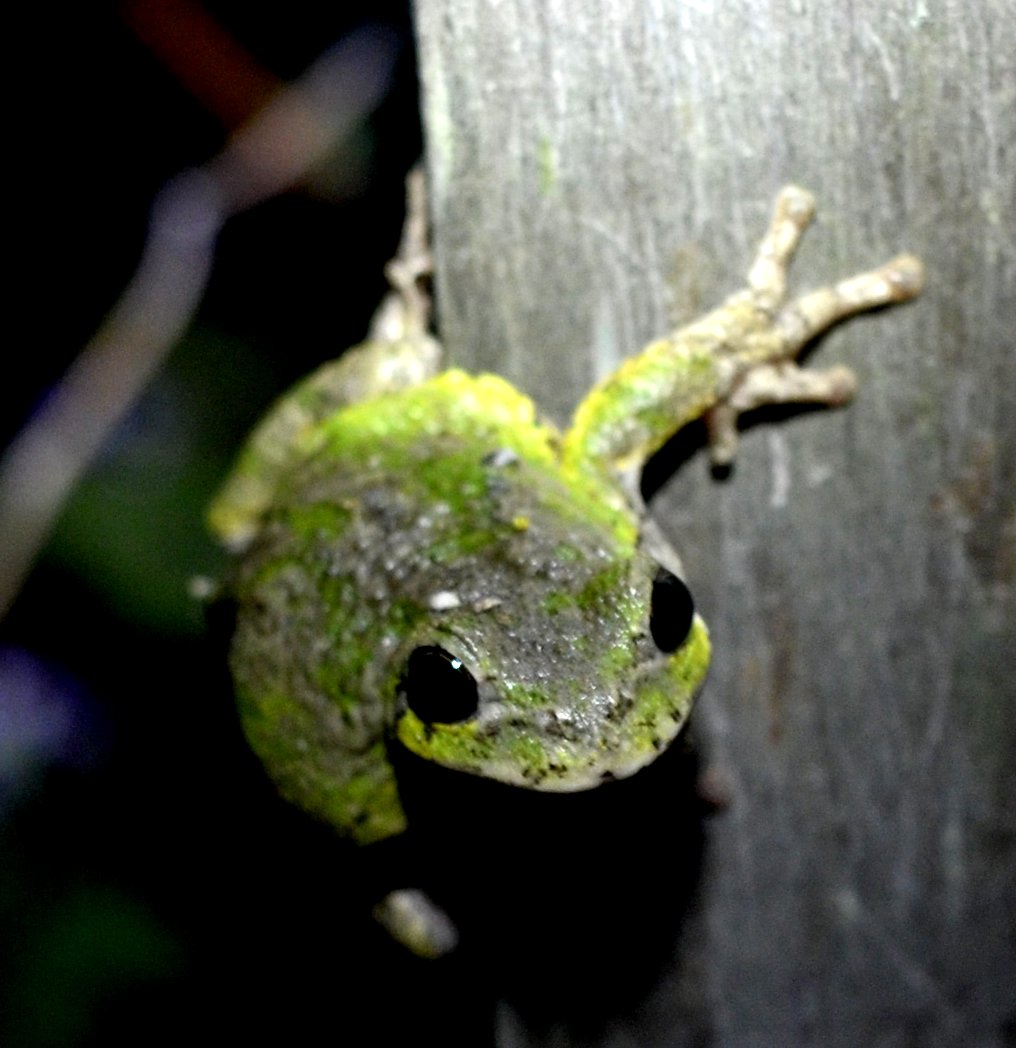
Later.
It's quite dark now except for the living room lamp which I've put out here. The lamp has attracted MANY caddisflies. A few grey tree frogs are to be seen. I like this one looking through a fence slat curiously.


12:10 am.
I'm just about to fall asleep when I hear a heavy object coming toward me. A huge raccoon was leaning into the water about a meter from me with both arms in the pond where one of the toads had been sitting. Instead of grabbing my camera I shouted "Big Raccoon!" The raccoon was out of there like lightning. Analysis: Raccoons attack toads. The smell of a sleeping human doesn't deter them.
12:40 am.
I spread out the leaf net over the pond and secure it with bricks. I don't know what kind of deterrent it will be - the worst is if a female actually comes to the pond and is trapped outside. These raccoons are very pesty. We're no longer allowed to trap one and loose it in the country. (Spread of germs, nuisance value to new "owner".) We can of course shoot it. I'm not prepared to do that. I lugged all my chairs and pillows inside and am now hoping to get a little sleep.
3:30 am
I go down to check on things. It has rained since I was last out. (Should have taken in the lamp!) As suspected, 3 little toads are sitting on top of the net. I have to unpin most of it to get the toads to slip into the water. Some of them get back onto the net. Tip them again. Reassemble the net.
6:30 am, May 26.
Go down to check. No dead toads. Analysis: The toads are quite capable of passing a whole night without killing one another.
One toad looking like a female is trying to get in under the net. I pick her up and put her into the pond.
A little after 7 am on May 26.
Trilling has commenced. A pair seem to be beginning the mating process. You can make out the greenish brown male on top of the pinker larger female. (Ignore the other toad at the top of the first image.)

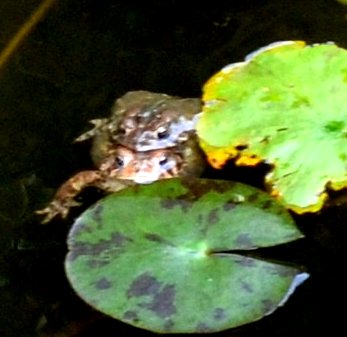
9:00 am.
Can't see the pair that were mating. I'm hoping they are just down at the bottom.
Later in the afternoon.
A lot of muck has been kicked up so it isn't very clear down there. But finally I spot the pair still in amplexus on the bottom of the pond. A lot of muck has been kicked up so it isn't very clear down there.
Bedtime
I put up the netting for the coming night. The male toads seem to be doing a bit of trilling but much less than before.
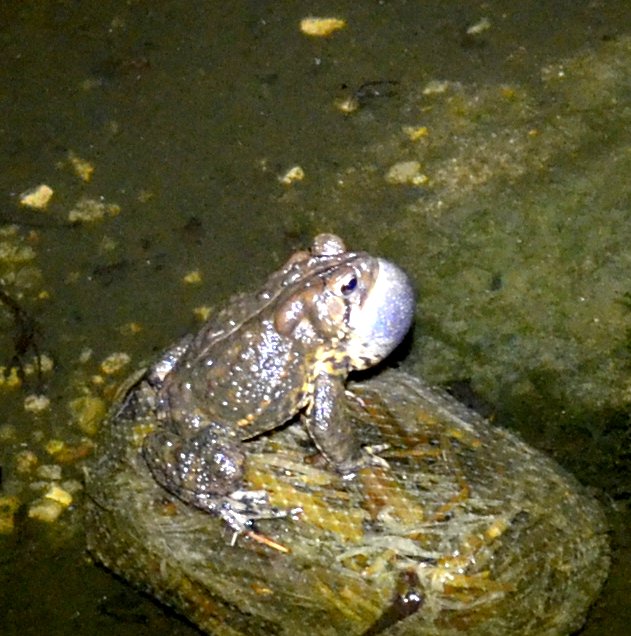 3:00 am.
3:00 am.
One new toad is sitting on top of the net. I pick it up and put it through a convenient hole in the net.
Morning of May 27
The netting is down into the water. Seems likely a raccoon got in and pulled the net in. I find one dead toad just at the edge of the netting, but the rest seem to have escaped from under the net. When the raccoons have massacred the toads in the past, they have always left bodies around uneaten.
Afternoon of May 27
The water has cleared somewhat. But a twisted string of something is wrapped around a lily stem. This is what the strings of eggs covered in protective gel looks like. Look in the lower right quadrant.
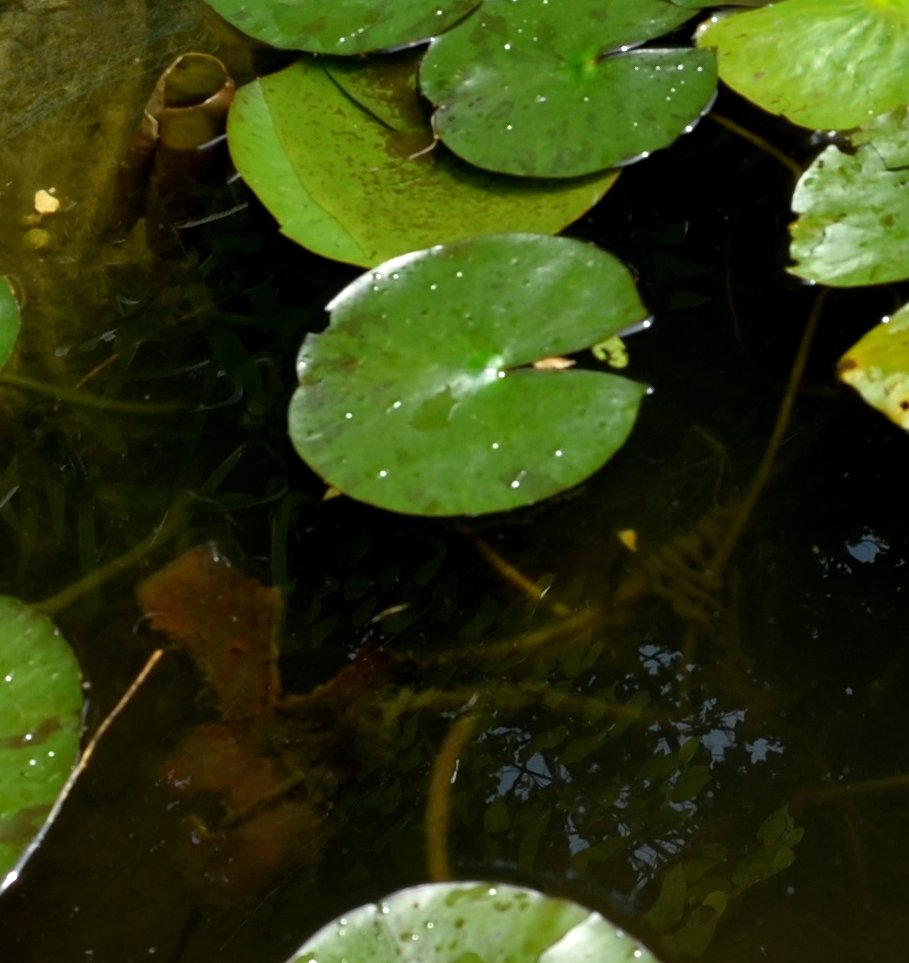
So now we know more about the American toad. It does NOT seem to be particularly mean to its cohort. Raccoons, on the other hand, are quite irrepressible about catching and killing toads who are intent on mating. They do not eat what they kill, but generally leave it in full view. Unless someone shows me otherwise, I will now go back to blaming this mayhem on raccoons.
Back to main blog menu
copyright Martha O'Kennon 2016









